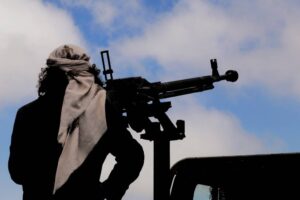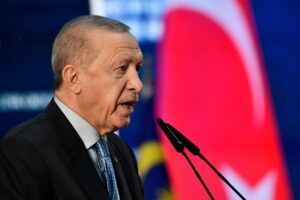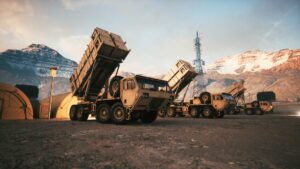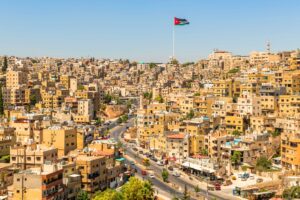‘Putin’s People’, by journalist Catherine Belton, presents its readers with a ruthless leader operating on a wavelength very different to that which Western leaders have grown accustomed. Although not strictly about the Middle East and North Africa (MENA), this piece of comprehensive investigative journalism tracks current Russian President Vladimir Putin’s meteoric but carefully calculated rise to power, presenting us with a leader with global influence whose beginnings have shaped the terms upon which he promotes Russian interests abroad more generally and in the MENA region specifically.
Beginning his career as an unknown KGB agent working in backwater Dresden during the Cold War, Putin carefully established a network that would be responsible for inserting him into the Kremlin’s halls of power. Perceiving him as a politician who would employ whatever means necessary to stay in power, members of the former KGB leadership identified him as the key to maintaining their control over Russia. Putin built an intricate network involving politicians, members of ruthless organized crime organizations, sympathetic journalists, and the ever hungry nouveau riche that are the oligarchs of today, which he successfully leveraged when it served his interests as well as pitted factions against each other when required.
Drawing on an impressive list of primary sources, many of whom were victims of Putin’s many machinations as well as Belton’s own extensive knowledge, she paints for her readers a portrait of a man who will stop at nothing.
This masterful game of chess, played by one of the most cunning politicians of our age, is shown by Belton to take place alongside an arsenal in which no means are off limits. This includes violence, disinformation, and the overt suppression of even the most basic of human rights. Drawing on an impressive list of primary sources, many of whom were victims of Putin’s many machinations as well as Belton’s own extensive knowledge, she paints for her readers a portrait of a man who will stop at nothing to attain the glory he has come to believe he is restoring to the Russian people.
The book sheds light on what some have defined as Russia’s imperial aspirations. While this has been most evident in Russia’s activity in its Eastern European and Caucasian spheres of influences, this driving force certainly plays a role in Russia’s activities in Syria as well as Libya.
Other than the fascinating account of the confluence of factors which led to Putin being installed as Russia’s longest serving leader, the book sheds light on what some have defined as Russia’s imperial aspirations. While this has been most evident in Russia’s activity in its Eastern European and Caucasian spheres of influences, such as Belarus, Ukraine, and Georgia, this driving force certainly plays a role in Russia’s activities in Syria as well as Libya. Understanding this through the prism presented by Belton – Russia’s extensive activities in its own neighborhood – leaves readers who follow and understand the delicate balance of power in the MENA region exceptionally concerned. It is indeed exceptionally frightening if the tools employed by Russia in their own neighborhood is any indication of what can be expected of Russia in the MENA region with the aim of promoting their own regional interests.
Finding a welcome ally in Western business interests who saw the economic potential of Russia’s development, Putin and his oligarch loyalists made use of corporate greed to exert influence abroad through what Belton identifies as ‘active measures’. This has included election meddling, funding opposition candidates more in line with Russian interests, and, on more than one occasion, enabling excessive violence aimed at serving Russian goals.
Most shocking in this regard is Belton’s assertion that Putin’s regime staged the now infamous 2002 Dubrovka Theater terror attack. Resulting in the deaths of close to 200 civilians, the aim of this, according to the book, was to sway public opinion towards the government taking a firmer hand on the Chechen issue, whose separatists were accused of perpetrating the ruthless attack. The use of similar operational tools in the tinderbox that is the MENA region, with the aim of facilitating activities favorable towards Russian political and economic interests, has the potential to ignite a fire of proportions previously unbeknownst to the region. ‘Putin’s People’ depicts a leader who is willing to employ any and all measures available.
Although long and going into great detail, which may be of less interest to those with no background in modern Russian political history, the book is a fascinating read about a man who will continue to play an influential role on the global stage for years to come. Impacting issues across the world, from economics, to politics, as well as the environment, the re-emergence of the ‘Russian Eagle’ is, and will continue to be, a force to be reckoned with. Indeed, it is no coincidence that the double headed eagle was maintained on the crest of the Russian Federation even after the fall of the USSR. Borrowed from the Byzantine Empire, whose use of it represented the Empire’s dominion over the Near East and the West, the modern Russian State, led by the man some have referred to as the ‘Puppet Master’, will surely continue to be inspired by this symbolism in its foreign policy.

















